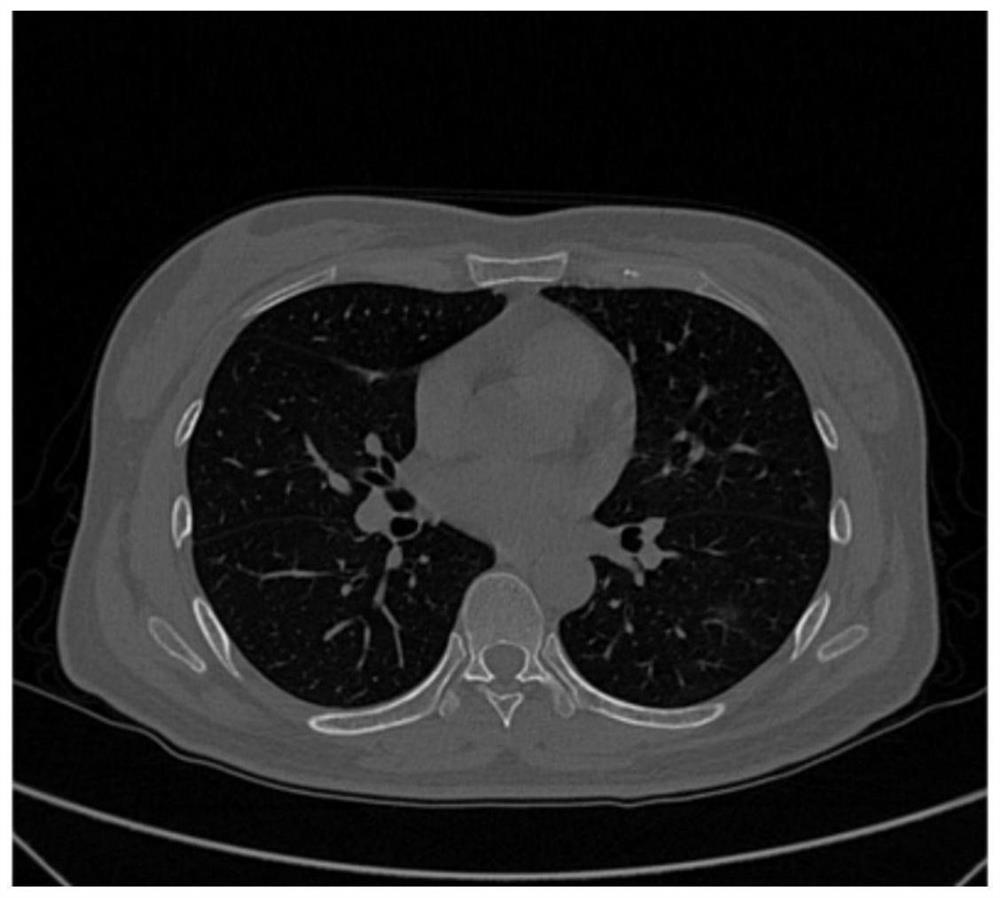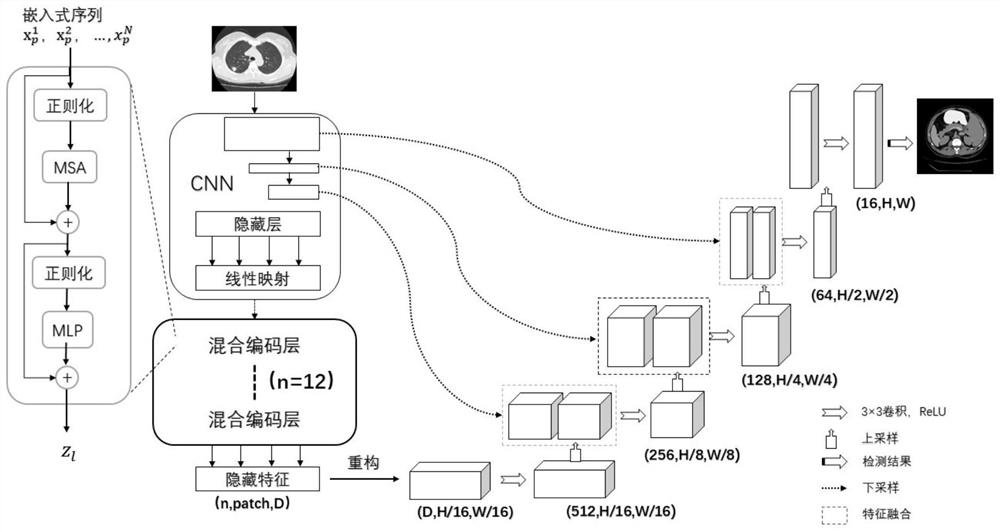Pulmonary nodule image detection method and system based on CT image
A CT image and image detection technology, applied in the field of image processing, can solve problems such as unsatisfactory results, and achieve the effect of avoiding subjective uncertainty and improving accuracy.
- Summary
- Abstract
- Description
- Claims
- Application Information
AI Technical Summary
Problems solved by technology
Method used
Image
Examples
Embodiment 1
[0051] Such as figure 1 with figure 2 As shown, this embodiment discloses a CT image-based lung nodule image detection method, which uses a TransformerUnet combined architecture for lung nodule image detection, and the TransformerUnet combined architecture includes a Transformer part and a U-Net part.
[0052] The lung nodule image detection method based on CT image described in the present embodiment comprises steps as follows:
[0053] Step S1 , image preprocessing. The image preprocessing described in this embodiment adopts image serialization, that is, the slices of the input lung CT image are reshaped into a set of patch sequences to perform tokenization.
[0054] Let the given lung CT image be H×W is the spatial resolution, and C is the number of channels. The goal is to predict the corresponding pixel label map of size H×W, which is different from the existing training CNN (such as U-Net), which encodes the image into a high-level feature representation, and then d...
Embodiment 2
[0083] This embodiment discloses a system of a pulmonary nodule image detection method based on the CT image described in Embodiment 1, which adopts TransformerUnet combined architecture, specifically including:
[0084] An image serialization module for reshaping slices of input lung CT images into a set of patch sequences to perform tokenization;
[0085] A patch embedding module for mapping vectorized patch sequences to a latent two-dimensional embedding space using a trainable linear map;
[0086] A hybrid encoder module of CNN and Transformer, which is used to encode the tokenized image patches from the CNN feature map into the input sequence for extracting the global context through the Transformer;
[0087] The cascaded decoder module is used to first upsample the encoded features obtained by the hybrid encoder module of CNN and Transformer through the decoder, and then combine the upsampled encoded features with high-resolution CNN feature maps to achieve precise posit...
PUM
 Login to View More
Login to View More Abstract
Description
Claims
Application Information
 Login to View More
Login to View More - R&D
- Intellectual Property
- Life Sciences
- Materials
- Tech Scout
- Unparalleled Data Quality
- Higher Quality Content
- 60% Fewer Hallucinations
Browse by: Latest US Patents, China's latest patents, Technical Efficacy Thesaurus, Application Domain, Technology Topic, Popular Technical Reports.
© 2025 PatSnap. All rights reserved.Legal|Privacy policy|Modern Slavery Act Transparency Statement|Sitemap|About US| Contact US: help@patsnap.com



